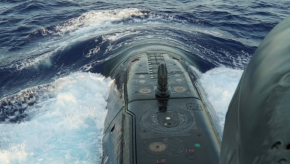Todjaeger
Potstirrer
Actually, research is still ongoing regarding the question of RF/non-ionizing radiation causing cancer, more info can be found here.Your interpretation of attitude for those comments was your own bias. There wasn't one. It's irritating to me that people think radars cause cancer. Like its irritating that people think seat belts are a crash hazard or cell phones will cause brain tumors. Because non-ionizing radiation burns, causes cataracts, not cancer. Also, I will happily tell the bridge officers who have tumors that it was likely all the other toxins in their environment vice the non-conclusive science on EM and cancer. Perhaps it was all the PCBs or asbestos in the plumbing or wiring. Or the PCBs in the electrical equipment. Or the lead in the paint. Or constant sun exposure. Or the fact the ship was full of cigarette smoke constantly.
In your own words (paraphrased)
I AM A ROYAL CANADAIN NAVY CURRENTLY SERVING COMBAT SYSTEM ENGINEER (20+ YEARS) AND A RADAR SAFETY OFFICER. I KNOW EXACTLY WHAT I AM TALKING ABOUT. I DON'T NEED TO BE INSULTED BY A CONDESCENDING MODERATOR.
Lets add in DD's 40+ years as a technician. Now just to be clear, everything after the word "paraphrased" was attitude.
It is also IMO very worthwhile noting that certain types of skin cancers, like Basal and Squamous Cell skin cancers are mostly caused by repeated exposure to UV rays from sunlight, as was as artificial sources like tanning beds, etc. See here for more info. Last I checked, UV radiation is also considered non-ionizing radiaton...
So yes, RF radiation can immediately cause radiation burns, but at least anecdotally repeated and long-term exposure can contribute to the development of cancers. Further, aside from possibly increasing the risk factors for developing cancers in the future, there would also be very real health concerns about people nearby radar installations possibly suffering radiation burns if the positioning and/or output was within certain parameters.




